Holy Rosary Catholic Church
cnr Woongarra and Barolin Streets, Bundaberg
Whitehouse Bros, Brisbane, 1933
Removed from gallery to transept,
with addition 1986 David Hudd, Brisbane
2 manuals, 4 ranks extended, electro-pneumatic action
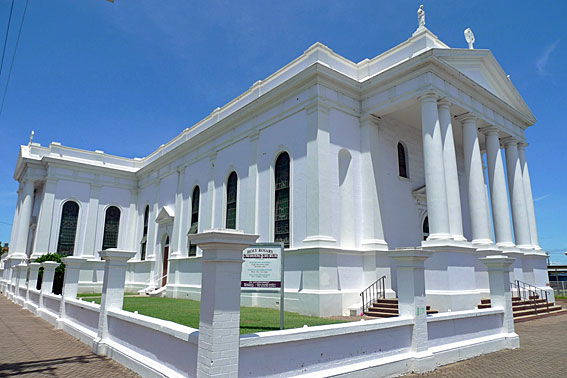
Holy Rosary Catholic Church, Bundaberg
[Photograph by Trevor Bunning (November 2010)]
Historical and Technical Documentation by Geoffrey Cox
© OHTA 2011, 2016 (last updated November 2016)
The original timber church on this site, facing Woongarra Street, was built in 1875. The present church, a brick and plaster building of classical design, was completed and consecrated in 1888. The building was designed by the former Colonial Architect, F.D.G. Stanley. It was reconstructed with the addition of transepts and sanctuary in 1926.1
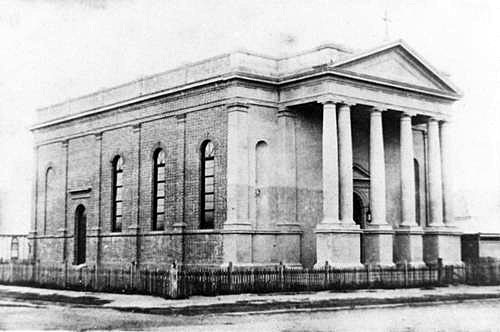
Holy Rosary Church, Bundaberg in 1889
before the addition of transepts and sanctuary
(Photograph: John Oxley Library,
State Library of Queensland)
The organ was completed in July-August 1933 by Whitehouse Bros at a cost of £1300, and dedicated to the memory of Mr and Mrs Michael Donovan.2 Comprising four ranks of pipes extended over two manuals and pedals with electro-pneumatic action, it was noted at the time for its advanced use of electric action, including even the swell-pedal action. Also notable was the inclusion of a Labial Clarinet, a flue stop designed to produce a reed-like timbre:
Several attractive features are embodied in an organ which has just been completed by Messrs. Whitehouse Bros., Brisbane, for the Church of the Holy Rosary, Bundaberg. Doubles are installed on both manuals, and reed tone is provided on the swell organ by means of a Labial Clarinet. This is a distinct advantage for a country town, owing to the readiness of reeds to go out of tune. The action of the instrument is all-electric, this also applying to the swell shutters. Stops are controlled by means of keys, instead of the old draw-stop knobs. . . . 3
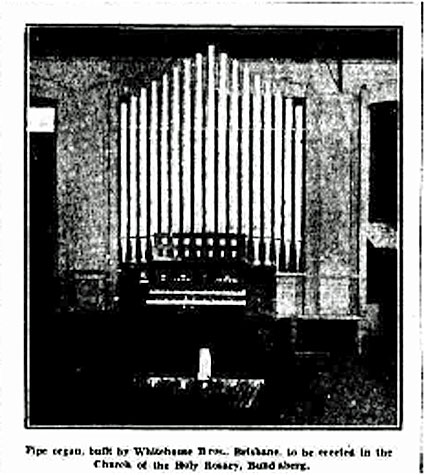
[Photograph: The Brisbane Courier (29 June 1933), p. 7]
This instrument was the second of the extension organs built by the Whitehouse firm around this time, the first having been installed in the previous year at St Andrew's Presbyterian Church, Bundaberg. These two were followed immediately by several others: at Ithaca Presbyterian Church in Brisbane (1933), St James' Catholic Church, Forest Lodge, NSW (1934), and St Patrick's Catholic Cathedral, Toowoomba (1935) and the New England Girls' School, Armidale (1936).
The detached roll-top console, imported from Aug. Laukhuff, is a standard Whitehouse type of the period, which can be observed not only on most of the other extension organs mentioned above, but also for example, at the Methodist Church, Chatswood (1930).
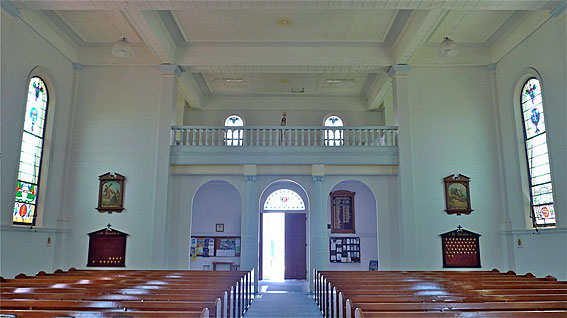
The original location of the organ in the west gallery
[Photograph by Trevor Bunning (November 2010)]
Located originally in the west gallery, the Holy Rosary organ was removed to the south transept by David Hudd of Brisbane in 1986, at which time a further extension to the Principal rank (Great Fifteenth 2ft) was provided.4 The console was placed in 'reverse' position, facing the altar.
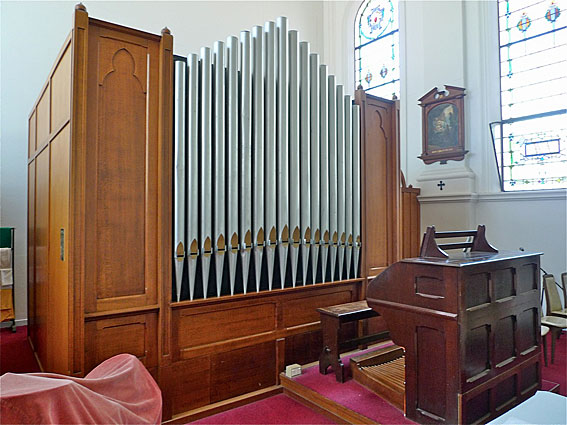
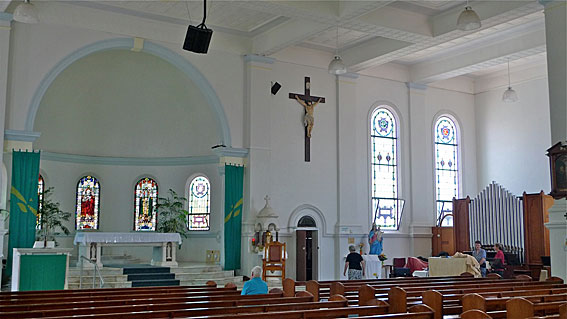
The new location of the organ in the south transept
[Photographs by Trevor Bunning (November 2010)]
Work on the bellows was undertaken around 1991 and key contacts were replaced in 1997 by W.J. Simon Pierce.5 Apart from the move from the gallery and the addition of one stop, the organ remains essentially in its original state, although most of the original stop-keys appear to have been replaced. Some of the original stop nomenclature had already been changed by the late 1960s/early 1970s.6 The original stop nomenclature, as published in 1933, is given below, incorporating subsequent and other details in square brackets:
GREAT |
|
|
COUPLERS
Great to Pedal
Swell to Pedal
Swell to Great
Swell to Great Super-octave
Swell to Great Sub-octave
Swell tremulant
Detached stop-key console
Electo-pneumatic action
Compass: 61/30
2 thumb pistons to Swell
2 thumb pistons to Great
Balanced swell pedal
Pedalboard: radiating & concave.7
________________________________________________________________________
1 Bundaberg City Council, Bundaberg City Council Quick Links – accessed February 2004; Donald Watson & Judith McKay, Queensland Architects of the 19th Century: A Biographical Dictionary (Brisbane: Queensland Museum, 1994), pp. 166-67, 175.
2 Bundaberg Daily News and Mail (14 July 1933), p. 2; Whitehouse Bros Ledger (1922-1940), p. 285; The date is given incorrectly as '1930' in Organ Society of Queensland Newsletter, vol. 18, no. 4 (February 1991), p. 35.
3 The Brisbane Courier (29 June 1933), p. 7; see also: Bundaberg Daily News and Mail, op. cit.
4 Personal communication to G. Cox from David Hudd, late 1980s.
5 Organ Society of Queensland Newsletter, vol. 18, no. 4 (February 1991), p. 35; The Organ Voice, vol. 23, no. 4 (December 1997), p. 28.
6 Specification noted by Robert Wallace (NSW), July 1967, and by G. Cox, July 1974. Details were further reported inaccurately in The Organ Voice, vol. 24, no. 3 (September 1998), pp. 10-11.
7 Specification from The Brisbane Courier (29 June 1933), p. 7; Bundaberg Daily News and Mail (14 July 1933), p. 2; Collected Specifications of Bernie Brohan (c.1952); additional details noted by G. Cox, 1974, or supplied by David Hudd, late 1980s.
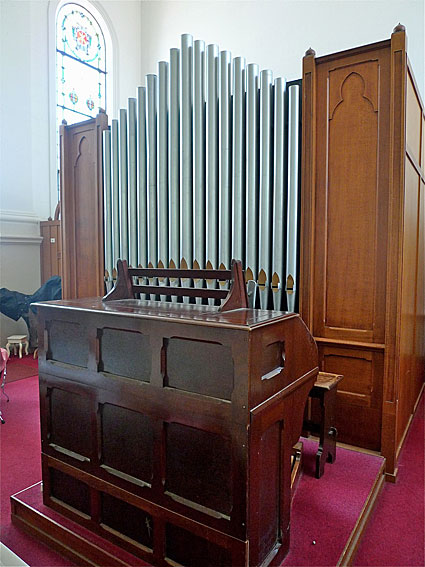
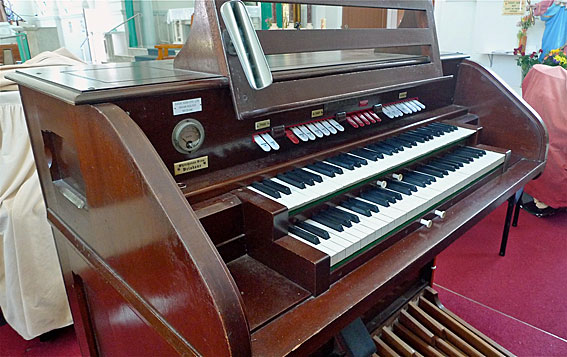


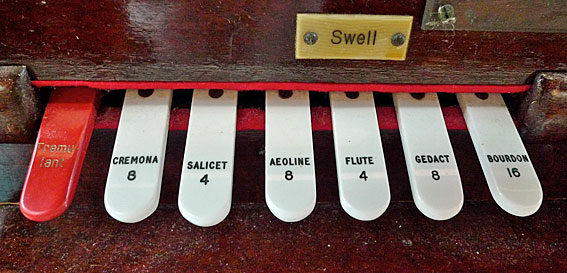
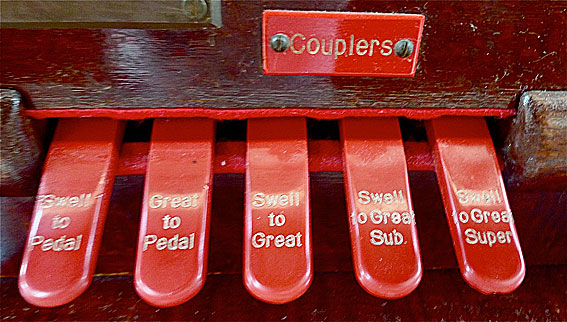
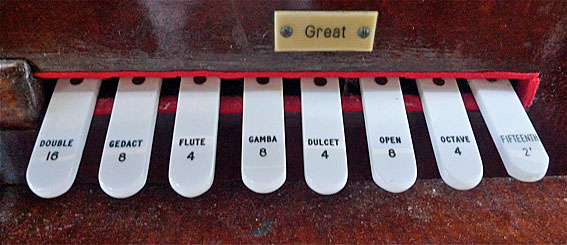
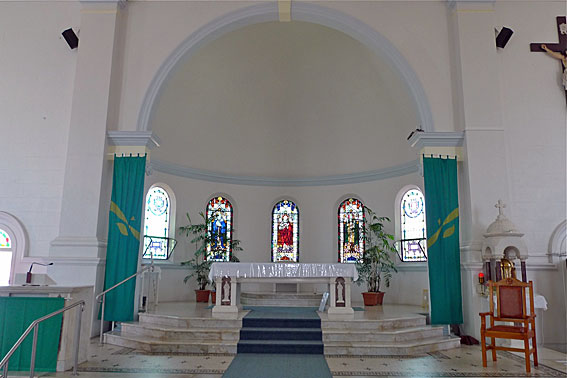
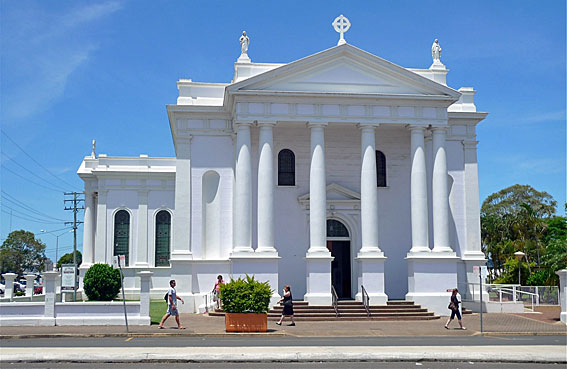
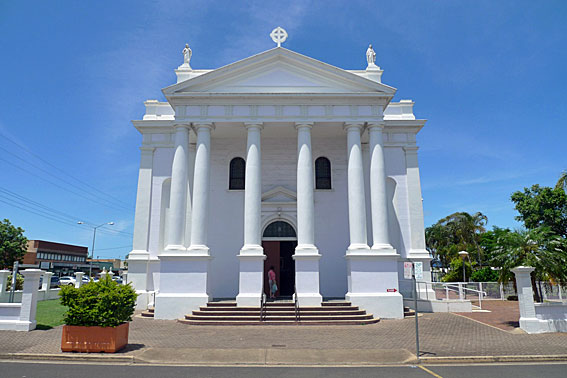
[Photographs by Trevor Bunning (November 2010)]